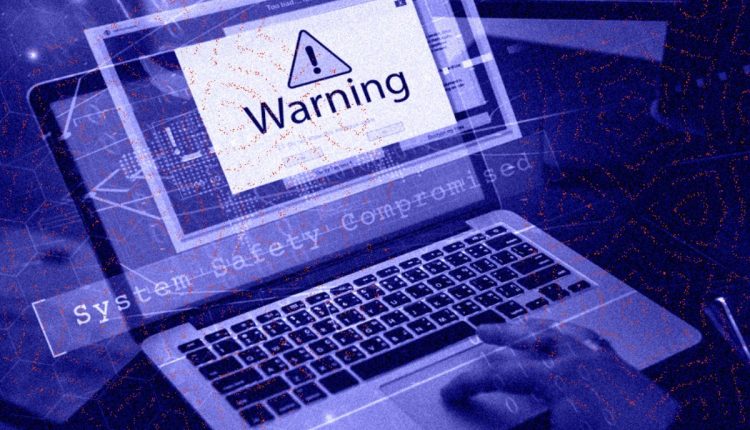How to Spot and Report a Cyberattack
With the rapid digitization of modern life, the threat of cyberattacks looms larger than ever before. Cybercriminals are constantly devising new tactics to breach security systems and steal sensitive data, causing substantial financial and reputational damages. Recognizing the signs of a cyberattack and knowing how to report it are crucial skills in the digital age. In this article, we will explore essential steps to spot and report a cyberattack to protect yourself and your organization from potential harm.
Recognizing Common Signs of a Cyberattack
Cyberattacks can manifest in various ways, but some signs are more common than others. If your computer suddenly exhibits unusual behavior, such as slow performance or unexpected crashes, it might be a warning sign of a cyberattack. Be wary of suspicious emails or messages, especially those requesting sensitive information or containing unusual links or attachments. Another indicator of a cyberattack is unauthorized access to your accounts or systems, which can be detected by reviewing login activity and security logs.
Types of Cyberattacks
Understanding the different types of cyberattacks can help you recognize them more effectively. Malware attacks, including viruses and ransomware, infect your systems to cause harm or demand a ransom. Phishing attacks involve cybercriminals posing as legitimate entities to trick users into revealing sensitive information. Denial-of-Service (DoS) attacks overwhelm websites or networks with excessive traffic, causing disruptions or rendering them temporarily inaccessible.
Steps to Spot and Identify a Cyberattack
The first step in spotting a cyberattack is to stay vigilant and trust your instincts. If something seems unusual or suspicious, investigate it further before taking any action. Employ security software and keep it up to date to detect and prevent potential threats. Regularly educating yourself and your team about cybersecurity best practices can significantly reduce the likelihood of falling victim to an attack.
How to Report a Cyberattack
If you suspect a cyberattack, it’s essential to report it promptly to the appropriate authorities. Contact your organization’s IT department or cybersecurity team to initiate an immediate response. They will assess the situation and take necessary measures to contain and mitigate the attack. Additionally, inform relevant external entities, such as local law enforcement or national cybersecurity agencies, depending on the severity and scale of the attack.
The Importance of Timely Reporting
Timely reporting of a cyberattack is crucial for minimizing potential damage and preventing further harm. Quick action allows for swift containment and recovery, reducing the impact on your organization’s operations and reputation. Moreover, reporting cyberattacks assists in the investigation process, helping authorities trace and apprehend the perpetrators, leading to a safer digital environment.
Preventative Measures
While knowing how to spot and report a cyberattack is essential, taking preventative measures is equally vital. Regularly backing up critical data can protect you from data loss in case of a successful attack. Implementing multi-factor authentication adds an extra layer of security, making it more challenging for cybercriminals to access your accounts. Educating employees about cybersecurity best practices empowers them to recognize and respond to potential threats proactively.
Conclusion
Being vigilant and informed about cybersecurity is crucial in today’s interconnected world. Cyberattacks can cause significant harm, but by knowing how to spot and report them, you can take important steps to protect yourself and your organization. Recognize common signs of a cyberattack, familiarize yourself with different types of attacks, and report any suspicious activity promptly to the appropriate authorities. Additionally, take proactive measures to strengthen your cybersecurity defenses and create a safer digital environment for everyone.
FAQs (Frequently Asked Questions)
- How should I handle a questionable email or message I receive?
- If you receive a suspicious email or message, do not click on any links or download attachments. Report it to your IT department or cybersecurity team for further investigation.
- Can cyberattacks affect individuals as well as organizations?
- Yes, cyberattacks can target both individuals and organizations. Personal devices and accounts are also vulnerable to various cyber threats.
- What is the role of national cybersecurity agencies in reporting cyberattacks?
- National cybersecurity agencies play a crucial role in coordinating responses to large-scale cyberattacks, conducting investigations, and providing guidance to affected entities.
- Is it necessary to change passwords after reporting a cyberattack?
- Yes, it’s advisable to change passwords after experiencing a cyberattack to ensure that attackers can’t regain access to compromised accounts.
- Are small businesses at risk of cyberattacks as well?
- Yes, small businesses are also at risk of cyberattacks, and they should implement cybersecurity measures to protect their data and operations.

